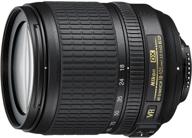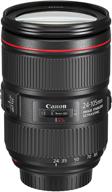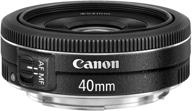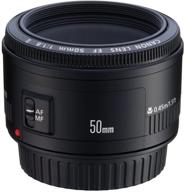
Review on 📷 Nikon AF-S NIKKOR 50mm f/1.4G Lens with Auto Focus: Perfect for Nikon DSLR Cameras by Ada Smyk ᠌

Normal product, but wanted more for the money.
In point of fact, this lens was intended to be used as a fast lens (for those who aren't familiar with the term "fast lens," it refers to the ability to open the aperture wide and snap photos of a high-quality in a shorter amount of time while simultaneously lowering the iso value). Because of this, there will be no blurring in the images that are captured, and you will be able to take clear photographs without the need of a tripod even in dimly illuminated environments (making it excellent for shooting indoors). (and a little extra help for those who don't know - the lower the aperture value, for instance, in this case f/1.4, the more expensive the lens is, and the faster it is) And with that, I'll be returning - a quick lens produces a picture that's quite good. When the aperture is wide open, the depth of field is extremely shallow. This creates a challenge for the autofocus system, as even the smallest shift in the position of the subject causes the image to become blurry and falls outside the range of what can be focused on. In this particular scenario, I suggest employing autofocus with spot metering. Do not forget that this is a portrait lens, which means that you should take shots of items that are more or less stationary with the aperture wide open. It is beneficial in some way. When the aperture is opened more narrowly, the depth of field expands, and as a result, the image retains a higher degree of sharpness even when there is continuous motion. Now that it is completely geared toward newcomers, take this lens with a calm attitude because you will be shooting on "auto," and in this scenario, the aperture is unlikely to be fully open. However, you will get pictures that are simply stunning, and you won't even notice any of the aforementioned drawbacks. Before to that, I was using a whale 18-55 nikor; the contrast between the two is absolutely astounding. Just pressing the button will result in an outstanding photograph. In general, a wonderful thing for shooting. ps: for those of you who are unfamiliar, the focal length is indicated by the number 50 mm. To put it another way, the distance between you and the object. In this particular instance, you won't be able to get any closer to the subject than 0.5 meters. You can turn the zoom ring to the value of 50 on your current lens, and this will allow you to determine the maximum distance at which your lens is capable of shooting. It does not provide a wide viewing angle.
- luminosity. color reproduction
- autofocus in conjunction with depth of field wide open
New products
Comments (0)
Top products in 👓 Lenses

New Nikon 18-105mm Vibration Reduction 📷 Zoom Lens with Auto Focus for Nikon DSLRs

104 Review

Black Canon EF 24-105mm f/4L IS II USM Lens - Model 1380C002

78 Review

Canon EF 40mm f/2.8 STM Lens - Fixed Black (6310B002) for US Cameras

76 Review

Canon EF 50mm f/1.8 II Fixed Lens - Discontinued by Manufacturer

93 Review





